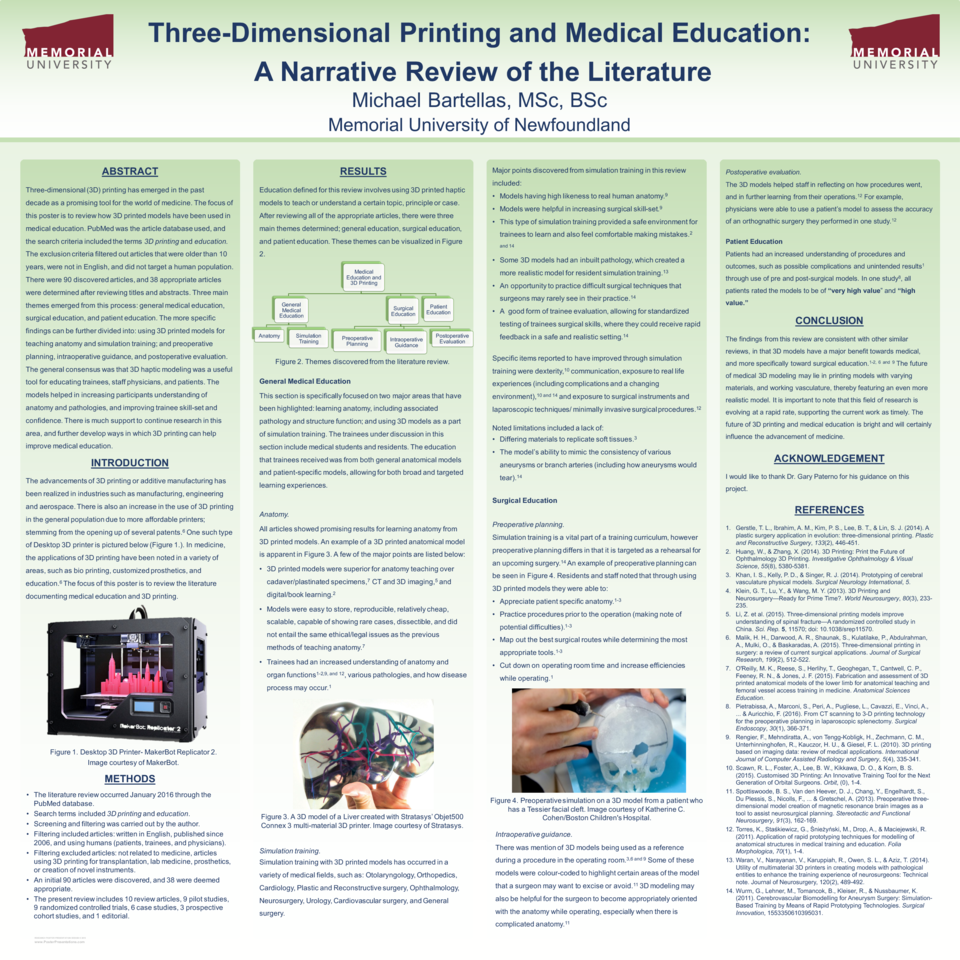Abstract
Three-dimensional (3D) printing has emerged in the past decade as a promising tool for the world of medicine. The focus of this poster is to review how 3D printed models have been used in medical education. PubMed was the article database used, and the search criteria included the terms 3D printing and education. The exclusion criteria filtered out articles that were older than 10 years, were not in English, and did not target a human population. There were 90 discovered articles, and 38 appropriate articles were determined after reviewing titles and abstracts. Three main themes emerged from this process: general medical education, surgical education, and patient education. The more specific findings can be further divided into: using 3D printed models for teaching anatomy and simulation training; and preoperative planning, intraoperative guidance, and postoperative evaluation. The general consensus was that 3D haptic modeling was a useful tool for educating trainees, staff physicians, and patients. The models helped in increasing participants understanding of anatomy and pathologies, and improving trainee skill-set and confidence. There is much support to continue research in this area, and further develop ways in which 3D printing can help improve medical education.






